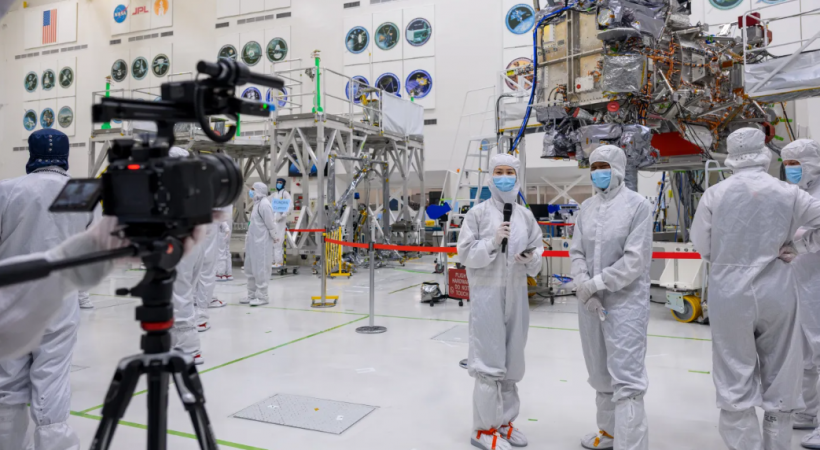US space scientists have unveiled the much-anticipated Europa Clipper spacecraft. This interplanetary probe, a key component of NASA's ambitious search for extraterrestrial life, is about to set out on a groundbreaking mission to Europa, one of Jupiter's icy moons.
Europa, among the 95 moons encircling the gas giant Jupiter, stands out as a prime candidate for potential extraterrestrial life due to its subsurface ocean, believed to be buried beneath an icy shell.
The mission's overarching goal, as stated by Bob Pappalardo, the mission's project scientist, is to address the fundamental question that has long intrigued humanity: "Are we alone in the cosmos?"
NASA's $5 Billion Europa Clipper Mission
With a $5 billion budget, the Europa Clipper is meticulously prepared in a sealed "clean room" at NASA's Jet Propulsion Laboratory in California to avoid contamination, which is critical to the mission's integrity.
Equipped with a suite of sophisticated instruments including cameras, spectrometers, a magnetometer, and radar, the Clipper is primed to conduct an exhaustive investigation of Europa's mysterious terrain.
These instruments, as Pappalardo tells AP, possess the capability to penetrate the moon's icy crust, potentially revealing the presence of liquid water-a vital precursor for life as we understand it.
However, the journey to uncover Europa's secrets is filled with challenges. The spacecraft must deal with a powerful radiation field surrounding Europa, which poses a threat to its sensitive instruments. Furthermore, the long distances involved cause significant communication delays, with data taking around 45 minutes to reach Mission Control.
Furthermore, the spacecraft's reliance on solar power poses an important problem, particularly during its time on Jupiter's dimly lit surface. Jordan Evans, the Europa Clipper mission's project manager, explained the stark contrast in power generation, pointing out the precipitous drop from 23,000 watts near Earth to a mere 700 watts at Jupiter.

(Photo : Image via NASA/JPL-Caltech)
Members of the media visited a clean room at JPL April 11 to get a close-up look at NASA’s Europa Clipper spacecraft and interview members of the mission team. The spacecraft is expected to launch in October 2024 on a six-year journey to the Jupiter system, where it will study the ice-encased moon Europa.
Europa Clipper Spacecraft Launching Later This Year
Scheduled to launch from NASA's Kennedy Space Center in Florida aboard a SpaceX Falcon Heavy rocket on a period that opens on Oct. 10, the spacecraft will undertake a six-year odyssey, punctuated by flybys of Mars and Earth, before arriving at Jupiter in 2030.
Once in orbit around Jupiter, the Europa Clipper will conduct a series of close flybys of Europa, dipping as close as 16 miles from its surface, gathering crucial data to unlock the secrets of the icy moon.
While the mission does not explicitly seek signs of life, its findings could provide invaluable insights into the potential habitability of Europa and, by extension, other celestial bodies within our solar system and beyond.
Stay posted here at Tech Times.
Related Article: NASA's Lunar Reconnaissance Orbiter Snaps Weird Moving Thing Orbiting the Moon-What Is It?









